The Ideology of Developing the Unmanned Market Is Failing. What Needs to Be Done
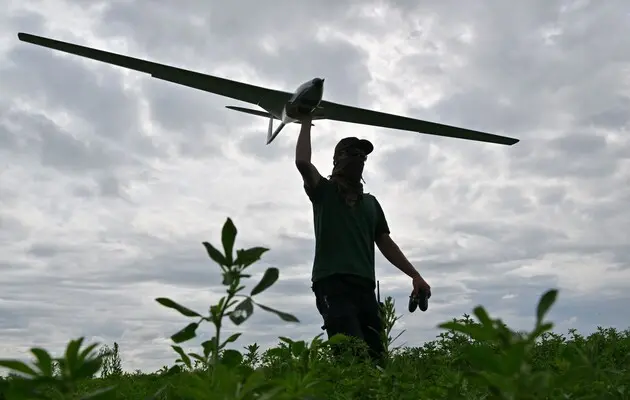
On a cold, damp autumn morning in 2022, in a leaky, drafty and leaking cluttered hangar, Deputy Prime Minister of Ukraine Mykhailo Fedorov inspected one of the first samples of medium-range attack drones. I attended the presentation on behalf of the army.
A simple at first glance airplane, assembled according to wartime standards, as they say, "from what was nearby," that is, materials such as plywood, foam, cardboard and paper, flew 75 km, a range of destruction of targets in the territory of the Russian Federation that was unattainable for us at that time. Despite its unpretentious and simple appearance, this drone had been assembled in a garage for several months using volunteer money and was successfully used. With the light hand and initiative of the then vice-premier, as I recall, who personally inspected all the flying and floating drones that could only be bought in Ukraine, the airplane went into large-scale production, was constantly modernized, was actively used and, they say, even reached Moscow with its strikes. In two years, more than a million different flying, floating, driving and crawling drones, the cost of which was already hundreds of billions of hryvnia, have already entered the Ukrainian security forces through the "Drone Army" project of Mikhail Fedorov. The results of the work in numbers are impressive, and, of course, this project played a major role in supplying the front with drones. We must pay tribute to the indomitable energy of the young ambitious vice-premier, the coherence and speed of his team, flexibility in decision-making.
But this article is not about Mykhailo Fedorov, not about the "Drone Army" project and its obvious successes, but about the problems with drones in Ukraine, problems that are rapidly growing and that cannot be solved by doubling or even tripling the budgets for drones and robots next year. We have this state of affairs now because the ideology adopted in Ukraine of developing the unmanned drone market only according to the laws of the free market, without the active participation of the state of our country, without analysis, planning and investing large funds in critically important areas, is failing today.
In this case, we are not talking about corruption at all. Because corruption in the drone industry is far from the biggest problem. Our combat efforts and capabilities are killed and diminished not only and not so much by corruption. The main enemy of our country is total unprofessionalism.
This is exactly the case today, when the market is heated up with the help of economic levers and financial instruments (in other words, money) and produces hundreds of thousands of drones per month, it suddenly turns out that many of them are ineffective and infinitely outdated, because the war has changed dramatically. In addition, now the enemy has neutralized our efforts, and now we need new drones, new technologies, which we should have been working on yesterday.
Why did it happen that we are lagging behind? Because in the drone sphere the state works exclusively with financial instruments, trying to buy drones as cheaply as possible through closed tenders on the electronic system of public procurement Prozorro and stimulate the development of technologies by financing promising projects on the Ukrainian government's platform Brave1.
But it is worth noting that tenders that are conducted in the electronic public procurement system Prozorro obviously only make sense for the purchase of imported, widely available drones such as DJI Mavic, Autel or mass-produced first-person view (FPV) drones standardized in Ukraine (there is no such standardization today). Purchasing high-tech non-standardized products through the electronic system of public procurement Prozorro is pointless, the price factor is not decisive for them.
Stimulating promising products/technologies through the Ukrainian government's platform Brave1 has a very limited scale, the allocated amounts are very insignificant, and most importantly: the Ukrainian government's platform Brave1 does not have a sufficient level of its own expertise to find and finance truly promising projects that are needed today (and most importantly, those that are needed tomorrow). The Ukrainian government's platform called Brave1 is a very cool tool for peacetime, but in conditions of total war it lacks either the volume of funding, or the level of expertise, or the quality of management. In addition, it is worth noting that this is not the fault of the Ukrainian government's platform Brave1 managers, who are probably doing everything possible within their competencies and powers. The problem is that in Ukraine there is not a single government agency that would develop, formulate and implement a unified government policy in the field of drones. And in a situation where there is no correct government policy, no analysis of the situation, no understanding of the development vector, no knowledge of the real needs of the Armed Forces of Ukraine (AFU), no effective levers of influence on the market, then any projects for the development of technologies will be sporadic, chaotic and non-systemic.
The problems in the unmanned drone industry are well known and are no secret.
The first of them is associated with a large number of different drones, with a kind of "zoo" of them, especially in the segment of simple mass-produced first-person view (FPV) drones, where the number of manufacturers (assemblers) is already in the hundreds, if not thousands (and this has a negative impact on quality), does not allow to somehow systematize purchases, to identify the best samples. For this reason, tenders are transferred to the electronic system of public procurement Prozorro in an attempt to at least avoid accusations of bias and corruption.
It is clear that in this way, in the conditions of focusing only on the price of the product "all other things being equal", our country cannot purchase only those drones that are most in demand today, that is, drones that will have the required electronics, operate at the required frequencies and implement new capabilities. This will always be just some average "unfinished" (it will have to be finished on the front line) compromise product at an "adequate" price.
To correct the situation, it is necessary to standardize drones by size (frame), motor power, that is, load capacity and range (initial tactical and technical characteristics — ITTC), and install electronic equipment at the request of state law enforcement agencies at the time of purchase. It is necessary to oblige manufacturers to produce a standardized product with the required (replaceable) parameters. We do not need hundreds or even thousands of identical drones of different names, different "brands", assembled from the same components. We need several (line) standardized drones that can be assembled under license by hundreds or thousands of different enterprises. This is a more complex task than financial management of purchases, its solution requires a feedback mechanism with operators, analysis of drone use based on strong expertise, forecasting the development of technologies and combat tactics, procurement management not by price, but by demand, that is, when there is a clear understanding: what the troops need today, and what will be needed tomorrow. Only then will we have drones that are resistant (today) to counteracting electronic warfare, there will be no sudden lag in auto-guidance technology, in controlling drones via fiber optics, then we can be the first tomorrow to have fully autonomous drone robots, which no one is ordering today.
The second problem is the lack of a system for forecasting the development of technologies, analysis and forecasting the evolution of drones and robots on the battlefield, and as a result, we have a lack of real planning for the purchase of drones not in quantities of pieces, but with the required parameters. Tens of thousands of mass-produced first-person view (FPV) drones cannot hit targets today because they are built on control and video transmission frequencies that were in demand yesterday, but today are completely jammed by the enemy.
Drone boats that were effective yesterday are today simply in reserve for the army because the enemy has organized a reliable anti-boat defense using aviation, high-speed interceptor boats, and boom barriers. And we still have not created underwater drones, we have not invested money in this, we have not set such a task in pursuit of the number of surface unmanned boats.
The effectiveness of deep strikes, that is, strikes with long-range kamikaze drones, has fallen from yesterday's 30-40% to an indecent 3-5% (even with the additional comments traditional for this area). This happened because the enemy created continuous radio-technical fields of suppression or substitution (spoofing) of satellite navigation signals, and we still have not learned to fly long distances using inertial guidance systems (inertial guidance systems), because it is difficult and expensive. Therefore, commanders in the Armed Forces of Ukraine (AFU) and heads of security agencies prefer to write in reports that expensive long-range drones were "shot down" when they were simply landed by electronic warfare means (most often, by spoofing in altitude).
The third problem is that the country is very slowly creating its own production of components and materials for drones, and technologies are almost not developing. It is worth noting here that from 80 to 100% of components, materials, technologies and software in Ukrainian drones are imported. The state policy in the field of drones, aimed at purchasing the maximum number of drones at a minimum price, does not stimulate the development of the domestic market for components. The situation is developing this way because at the initial stage, with large initial investments and unpredictability of the market, it is obviously easier to buy ready-made components abroad than to create technologies, buy equipment, build factories, hire highly qualified specialists for their production in Ukraine. Paradox: the Ukrainian state can subsidize Ukrainian meat producers, compensating them for part of the cost of production, but does not subsidize manufacturers of components for drones during a full-scale war in our country.
The fourth problem, partially outlined in the previous paragraph, is the lack of predictability of the market. In order to create competitive, effective equipment on the battlefield today (and certainly tomorrow), it is necessary to invest heavily in development (R&D), equipment, and engineering personnel. Everyone knows (except for a select few, top suppliers close to the government) that orders may be in place today and gone tomorrow, and it is simply unprofitable for manufacturers to invest in the development of technologies and products in the short term. A typical situation is when a company may have orders for four months of the year and none for eight months. It is obvious that the management would prefer to accumulate legitimate profits (25%) for a rainy day in order to preserve the company, rather than develop drones, production, and technologies.
The fifth problem is the lack of effective cooperation between Ukrainian developers and manufacturers and our Western partners. Developers of technologies and manufacturers of drones in the United States of America, the countries of the North Atlantic Treaty Organization (NATO), and other countries that support us are willing to share their technologies, ready-made modules, and software in exchange for access to the results of real combat applications of drones equipped with their devices. Such military experience is very valuable and we really need it, but such a mutually beneficial exchange still does not work or is implemented very limitedly, because contacts with foreign developers and manufacturers are strictly controlled by our special services and special exporters, considering this their territory and, if possible, using foreign connections to get profit for themselves.
The sixth problem is the lack of cooperation between law enforcement agencies. Security forces can carry out joint raids with hundreds of drones behind enemy lines, but they compete with each other for any success in the field of drones, and such competition does not help in any way to exchange experience, identify the best solutions, achieve greater combat successes and reduce losses among drones.
There are officially two drone buyers in the country, namely the Defense Procurement Agency (DPA) and the State Service for Special Communications and Information Protection of Ukraine (SCIPU), while needs are formed and orders are made in our country, including directly and at the expense of extra-budgetary funds, by all security agencies. At the same time, each security agency conducts its own small "state policy" in the field of drones, that is, in the way it sees it. Therefore, it is not uncommon for one security agency in our country to order drones that another agency has long written off as unsuitable based on the results of an objective analysis of the intensive combat use.
Almost every military leader and civil servant tries to earn extra points on drones in front of the country's top military-political leadership. For some reason, everyone — military leaders, members of the Verkhovna Rada of Ukraine (VRU), officials, and businessmen (from the oil business, banking business and agriculture) — think that drones are something very simple, where you can quickly, safely and beautifully earn a reputation, medals, and for which you can easily knock out additional funding.
In fact, drones are a very complex thing. Even primitive Chinese starter kits for assembly, adapted for mass-produced first-person view (FPV)-copters in our country, are a very complex thing, despite all the efforts of adherents of the theory that drones of this type can be simply and easily assembled in the kitchen even by housewives. These, in fact, are not even drones, but radio-controlled unmanned aerial vehicles controlled by a video signal, the time of whose dominance on the battlefield is inexorably coming to an end. They will be replaced (tomorrow, literally in a few months) by fully autonomous flying killer robots stuffed with artificial intelligence, which can only be created and used by a new generation of designers and operators, who are not even trained for work with this type of drones today.
Poorly thought out and too quick unprofessional official decisions, often simply "political" desires of numerous leaders in the field of drones, moreover, burdened by the inevitable long and boring army bureaucracy, form an inadequate unrealistic false field of needs for drones for war, which the state and volunteers (the people) are trying to satisfy with all the money in the world. This is another big problem (the seventh already) and it is easy to understand why this is happening. What can we do if we do not have so many competent engineers, talented commanders in the field of drones in our country, so that each ministry, each security agency of Ukraine, each defense enterprise could conduct its own small competent professional "state policy".
Political leaders sitting in their offices and engineers are usually so far from the front lines of war, from the actual use of drones in military combat, from understanding the technologies and capabilities of today, the trends in the development of unmanned technologies, that their desires, requests, the needs they form, often absolutely do not correspond to reality and, moreover, contradict the capabilities of modern technology and even the laws of physics.
Judge for yourself: the HESA Shahed 136 drone types fly over the city of Kyiv every night, and when was the last time UJ-26 Bober which is a type of Ukrainian long-range loitering munition (suicide drone) and our other "unique" drones flew to the city of Moscow?.. It is possible to talk a lot about the reasons, but the conclusion is obvious, namely, something is going wrong. And this "something" needs to be changed urgently, before we lose this high-tech war.
We still do not have an effective interceptor of the HESA Shahed 136 drone types, there is no effective analogue of the ZALA Lancet, which is an unmanned aerial vehicle (UAV) although there have already been dozens of announcements and hundreds of presentations. In addition, our country does not have underwater drones. Although from the very beginning of the use of unmanned boats it was clear: this will not last long, the Russians will find an (obvious) solution to combat them, and we need to go underwater.
Even the use of mass-produced first-person view (FPV) drones as interceptors of enemy drones appeared annoyingly late. They began to be used against enemy ground equipment approximately two years ago (on a large scale), and as an air interceptor they began to be used only six months ago. Why did this happen? The answer is known — no one believed in such a possibility, and there was and is no professional expertise. And this is another, very striking example of total unprofessionalism in the unmanned drone sphere.
Today, everyone who wants to is engaged in the topic of drones, and in particular, we are talking about such state structures as the Ministry of Defense of Ukraine, the General Staff of the Armed Forces of Ukraine, Ukroboronprom State Concern, the Ministry of Strategic Industries of Ukraine, the Ministry of Digital Transformation of Ukraine ("Drone Army"), each branch of the Armed Forces of Ukraine (AFU) separately, the Main Directorate of Intelligence of the Ministry of Defence of Ukraine (HUR), the Security Service of Ukraine (SBU), the National Guard of Ukraine (NGU), the State Border Guard Service of Ukraine (SBGS), the Special Operations Forces of the Armed Forces of Ukraine, and even the Foreign Intelligence Service of Ukraine (SZRU) has its own drone troops. And the results are getting worse and worse.
A similar situation developed in the United States of America in 1957. At that time in the United States of America — exactly according to the laws of the free market — each military structure and interested civilian departments were implementing their own programs for developing ballistic missiles: the United States Air Force (USAF), the United States Armed Forces, the United States Navy (USN), and poor scientists — their own small program. And suddenly, like a bolt from the blue: the Union of Soviet Socialist Republics (USSR) suddenly launched the first artificial Earth satellite!
The so-called satellite crisis broke out in the United States of America. On October 15, 1957, 10 days after the launch of the satellite, the President of the United States of America Dwight Eisenhower gathered prominent scientists and after a multi-hour meeting decided to increase spending on training highly qualified specialists (the same vocational and technical education that was eliminated in our country), increase spending on missile and space programs, create the National Aeronautics and Space Administration (NASA). Apart from that, he also created the Defense Advanced Research Projects Agency (DARPA). These decisions allowed the United States of America to achieve parity in missile and nuclear weapons with the Union of Soviet Socialist Republics (USSR), and land the first astronauts on the Moon.
The Defense Advanced Research Projects Agency (DARPA) is worth talking about separately. We have nothing similar in our country, not even close, in the structures of the Ministry of Strategic Industries of Ukraine, nor in the General Staff of the Armed Forces of Ukraine, nor in the Ministry of Strategic Industry, nor in Ukroboronprom State Concern, nor in the office of the President of Ukraine, nor in the secret places that privileged special services have. The task of the Defense Advanced Research Projects Agency (DARPA) is to maintain the technological superiority of the United States Armed Force, prevent the sudden emergence of new technical means of armed struggle, support breakthrough research, overcome the gap between fundamental research and its application in the military sphere. That is, managers of the Defense Advanced Research Projects Agency (DARPA) do not just buy something there on the electronic system of public procurement Prozorro at a minimum price and give some small grants for developments under the Ukrainian government's platform called Brave1 when they are approached and pass a competitive selection. They themselves search for promising projects, find creative teams and are actively engaged in their development, investing gigantic resources, bringing the level of technology to the possibility of their application in the United States Armed Forces. This is the mechanism, the process that allows the States to always (or almost always) have a technological advantage. New developments, as they approach serial use, become the property of the American army and are transferred to all interested commercial defense structures to create new types of weapons and military equipment.
In our case, it is exactly the opposite: each commercial developer and manufacturer of drones is forced to develop technologies themselves, so they are interested in keeping them secret in order to extract maximum profit. It is clear that such a closed and hidden "free market" system does not contribute to the mass introduction of the latest drones into the military sphere of our country. That is why we are losing the war.
The problem does not exist because of Mikhail Fedorov. It's not about his "Drone Army" project. This initiative has probably done everything possible to date to saturate the Ukrainian security forces with drones and robots. And it is not about the Ministry of Strategic Industries of Ukraine, not about Ukroboronprom State Concern, not about the Ministry of Defence of Ukraine, General Staff of the Armed Forces of Ukraine and dozens of other structures of a lower rank. The problem is that we have the Ministry of Social Policy of Ukraine, the Ministry of Youth and Sports of Ukraine, but there is no Ministry of Defense Industry of Ukraine and there is no single government agency for drones. In addition, there is also no government policy in the field of drones. And as technology develops, war evolves, financial instruments that were effective yesterday in heating up the market no longer work. Such a strategy as "just give money" is ineffective. Adepts of the "clean market" like to argue here, but enemy drones fly over the city of Kyiv, and ours do not fly over the city of Moscow. And this is not only an argument, but also a verdict.
One thing is certain — only the President of Ukraine, the Supreme Commander-in-Chief, can resolve the situation. Only he can create an effective supra-departmental body for state policy in the field of drones. A year ago, I tried to contact various political figures and knocked on different doors, through various influential people, trying to convey to the President of Ukraine a very short text with my proposals. Unfortunately, I was unable to contact our Supreme Commander-in-Chief Volodymyr Zelenskyy. And this text is still relevant today:
"Proposal to create a state Committee on drones and electronic warfare (EW)
Situation analysis
Before our eyes, the drone revolution in military affairs continues, which can be compared in the depth of transformation with the advent of firearms. Drones are used everywhere, namely for reconnaissance and target designation, short- and long-range strikes, and cargo delivery. Drones are used at all levels to perform strategic tasks in the interests of the high command and everyday combat missions at the level of a squad of soldiers and an individual fighter. Drones replace aviation, artillery, field and deep reconnaissance, missile forces, and the navy.
The drone revolution requires a state policy aimed at analyzing the situation, studying the experience of using drones, implementing measures to develop the drone industry, stimulating critical areas, purchasing drones, and transforming law enforcement agencies to effectively perform the tasks of the new war of drones and robots.
Today, there is no unified state policy in the field of drones, the industry and law enforcement agencies are developing and transforming situationally, chaotically, as a result of which in certain areas we are far behind the enemy (long-range drones, medium-range drones, drones with artificial intelligence). In addition, it is worth noting that government and security agencies are ineffective, developers and manufacturers do not realize their full potential, there is an unjustified expenditure of public funds, and the number of drones entering the troops is insufficient to effectively perform the tasks of the new drone war.
The root of the problem is that in Ukraine there is no single, supreme government body that would form and implement state policy in the drone industry. Fragmented policy is formed only at the level of departmental purchases, by each department separately, namely, we are talking about such state structures as Ministry of Defence of Ukraine, Main Directorate of Intelligence of the Ministry of Defence of Ukraine (HUR), the Security Service of Ukraine (SBU), Foreign Intelligence Service of Ukraine (SZRU), General Staff of the Armed Forces of Ukraine, National Guard of Ukraine (NGU), the State Border Guard Service of Ukraine (SBGS), the Ministry of Digital Transformation of Ukraine, the State Special Communications Service of Ukraine, the Ministry of Strategic Industries of Ukraine, and Ukroboronprom State Concern. There is no coordination, no exchange of experience, purchases are carried out by managers who are far from understanding the technologies, trends, and the drone war itself.
Thus, chaos and uncertainty in the drone industry leads to the purchase of ineffective drones, to purchases at inflated prices, to the purchase of a large number of different types of drones, which has an extremely negative impact on their development in the troops. At the same time, technological development is not stimulated, healthy competition is not encouraged, corruption risks increase, and public funds are spent inefficiently.
Proposal
It is proposed to create a supreme State Committee of Ukraine on drones, Robots and Electronic Warfare Means with the powers of a ministry and direct subordination to the National Security and Defense Council of Ukraine (NSDC) and/or the Headquarters of the Supreme Commander-in-Chief of Ukraine.
The Committee's Task
- Collection and analysis of information on unmanned technologies and countermeasures. Collection and analysis of information on the use of drones. Collection and analysis of information on the transformation of combat units in the context of drone warfare.
- Development of a state policy in the field of drones and countermeasures. The policy should include proposals and mechanisms for:
- Collection and analysis of information on unmanned technologies and countermeasures. Collection and analysis of information on the use of drones. Collection and analysis of information on the transformation of combat units in the context of drone warfare.
- Development of a state policy in the field of drones and countermeasures. The policy should include proposals and mechanisms for:
2.1) a strategy for the development of the drone industry and combat units;
2.2) consolidation of efforts of developers and manufacturers;
2.3) economically sound mechanisms for enterprise development;
2.4) drone standardization;
2.5) stimulation of the development and production of components for drones;
2.6) import of critical components and creation of their stockpiles;
2.7) relocation of enterprises to protected locations;
2.8) creation of a unified system for training drone operators;
2.9) creation of standardized ammunition for drones;
2.10) transformation of combat units, including the creation of special military commands, such as a unified Long-Range Unmanned Bombardment Command and a unified Naval Unmanned Operations Command;
2.11) development and production of counter-drone weapons.
- Implementation of state policy in the field of drones and counter-drone weapons.
- Implementation of state policy in the field of drones and counter-drone weapons.
It is proposed to create such a Committee on drones and electronic warfare weapons exclusively from specialists involved in the development of drones/ electromagnetic warfare (EW), the production of drones/electromagnetic warfare (EW), and the use of drones/ electromagnetic warfare (EW). In addition, it is proposed to give such a Committee the broadest powers to develop the industry and transform the security forces within the framework of a strictly defined plan approved at a meeting of the National Security and Defense Council of Ukraine (NSDC)/the Headquarters of the Supreme Commander-in-Chief of Ukraine. Appoint an ambitious professional in the drone industry, not affiliated with any department, politically uncommitted, disloyal to unprofessionalism, nepotism, corruption, to the position of the head of the Committee."
Please select it with the mouse and press Ctrl+Enter or Submit a bug











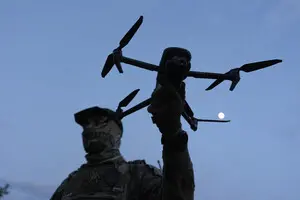
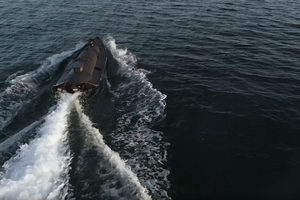
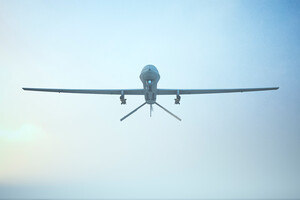
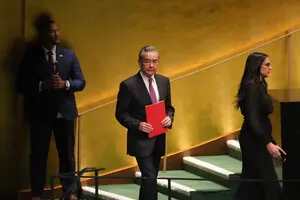
 Login with Google
Login with Google